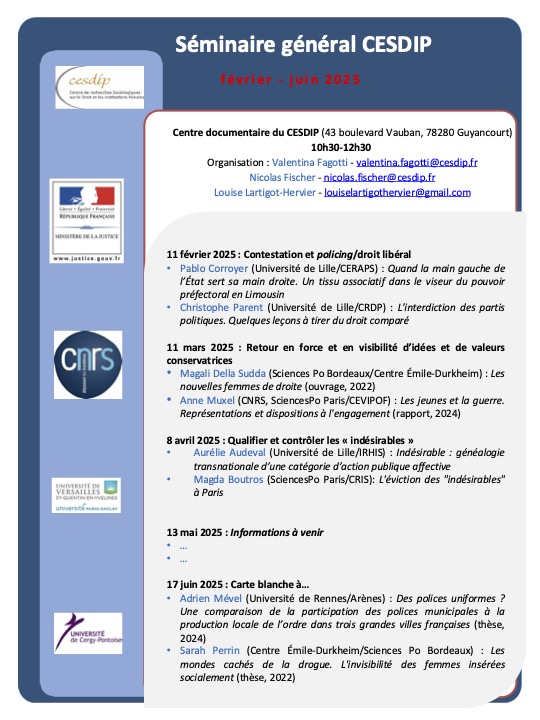By Jacques de MAILLARD, Carole GAYET-VIAUD and Fabien JOBARD – October 2017
Jacques de Maillard, Carole Gayet-Viaud and Fabien Jobard describe a survey evaluating an innovation in French policing: police auxiliaries whose objective is to restore public’s trust and confidence in the police. The investigation was the object of a research agreement signed in 2014 with the National Agency for Social Cohesion and Equal Opportunities, following a joint initiative by the Ministry of the Interior and the Ministerial Delegation for Urban Affairs
The Trust in Police Auxiliaries (henceforth TPA[1]) are retired police officers whose mission is to bring the police and the public closer, in neighbourhoods identified as high-priority security-wise; that is, working-class districts, high-rises, and housing projects. This function was created and developed in two phases: first, in 2008 with the President Sarkozy’s “Hope for the Suburbs Plan” (Plan Espoirs Banlieue), then in 2012 within the Top Priority Security Zones (Zones de Sécurité Prioritaire), which, inspired from the notion of “hotspots”, were created by the socialist government in August 2012. In 2015 there were 111 auxiliaries: 34 at the Paris Police Headquarters (PP), 77 for the rest of the country, under the Direction centrale de la sécurité publique (DCSP) that is the Central Directorate of Uniformed Police.[2] In a political context where the relations between the police and the public are deteriorated, as so often described and denounced,[3] the definition of the overall goal is both vague and ambitious, since, according to the memorandum dated March 11, 2009, “each auxiliary should aim at eliciting a trustful atmosphere in the area to which he/she is assigned, by establishing many personal contacts with the public, the elected officials, the public housing agency, janitors, the National Education personnel, health professionals and neighbourhood associations”.
The objective of the survey conducted by the CESDIP was to do a first assessment of the TPA scheme. It observes how the TPAs proceed when attempting to improve relationship between the police and the public. Does this scheme contribute to improving relations between the police and the local population, and over and beyond this, does it represent a noteworthy innovation within the policing institution? To answer these questions, one must first understand what TPA actually do, how capable they are of entering into local partnerships, what ties they have succeeded in establishing with the inhabitants and their representatives, the projects they support, but also the constraints restricting their action.
[1] The French acronym is DCPP, standing for Délégués à la cohésion police-population
[2] The DCSP, with its police stations and emergency squad (police secours), constitutes the most dense territorial network, covering 40% of the population (26.2 million inhabitants) and 75% of problem neighbourhoods, and handling 62% of cases of offending recorded across the entire country, according to the ministry. The PP covers Paris and since 2009, its first outer ring of suburbs.
[3] This has been documented by the activist/community associations as well as by researchers (C. Mouhanna, La police contre les citoyens ? , (Nîmes, Champ social, 2011), and R. Lévy, La police française à la lumière de la théorie de la justice procédurale, Déviance & Société, 40 (2), 2016, p. 139-164), but is also acknowledged by the institution itself, which explicitly made this concern the theme of its 2012-2013 National Conference. For a comparative overview, see F. Jobard and J. de Maillard, Sociologie de la police, (Paris, Armand Colin, 2015), p. 171-197.



